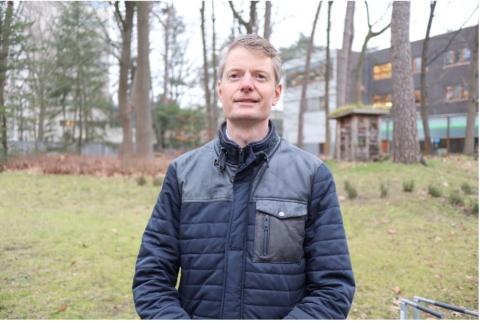Wilding one square meter of garden for one year: The results
Exactly one year ago, Assistant Professor Ben Vollaard of Tilburg University and Dutch daily newspaper NRC Handelsblad started the crowdsourcing project ‘Wilding the Garden.’ The purpose of the project was to allow people to experience what happens when they leave a patch of garden untended for a year. With 8,500 garden owners participating initially, we can call it a successful project. Now, one year on, we look back and discuss the results.
Over the year, participants were encouraged to closely observe their slowly wilding patch of garden. Wonder about nature and connection with it were central. What happens if you leave a corner of your garden to fend for itself for a full year? What grows, blooms, and scurries around in that wilding patch? Participants were aided in observing plants and insects with plant and bug identification apps. In addition, they set to work on soil type, soil permeability, and the leaf decomposition process and they were encouraged to talk to the neighbors about their wild patch of garden.
Four lessons the project has taught us
- The interest in more natural ways of gardening was overwhelming. Much to our surprise, no less than 8,500 household from across the country participated. Participants’ responses at the end of a short registration questionnaire also reflected this enthusiasm. Normally, the space at the end of a questionnaire under the question ‘Do you have any further comments?’ is hardly ever used, but on this occasion, hardly anybody failed to leave comments.
- Participants had expected that almost all their neighbors would disapprove of a scruffy garden and thought of themselves as the exception. Participants thought that neighbors would censure their failure to remove dead leaves, branches, and weeds. They themselves are of a different mind altogether. 75% of participants are of the opinion that it is alright not to sweep away dead leaves and twigs; 50% is not bothered by weeds in the garden. Two thirds do not believe that an untidy garden detracts from the appearance of the street as a whole. It is possible that participants think that their neighbors are more judgmental than they are, but this has not been studied in the context of this project.
- People’s views and their gardening methods have changed as a result of having experienced the wilding process up close. After six months, one in three participants said they were more aware of the benefits of nature-friendly gardening. These same participants answered the question of whether a garden needs to be tidy more often in the negative than at the start of the project. This changed attitude translated into a different approach to gardening in the rest of the garden.
- A wild garden is adversely affected by nitrogen depositions. The project offers an interesting glimpse of what happens in many different places in the Netherlands if people leave a square meter of land untended for a while. This was a unique opportunity, since garden owners usually tend their garden by removing weeds, among other things. And guess what? In one in four wilded patches, nitrogen-loving species dominated in the first few months: grasses, nettles, and brambles. In rural areas, this proportion was twice as high as in the rest of the country.

There is a difference between what people think of their own garden and what they think the neighbors think of it
Assistant Professor Ben Vollaard
Conclusion: Talk to your neighbors!
One year on, it is clear to us that the greatest challenge is to really leave the garden be. One important reason why many people hesitate to adopt more natural gardening methods is the social norm of a tidy garden. After all, a well-tended garden sends the message: decent people live here who are willing to conform. Garden design and maintenance level are part of group behavior so changing it poses a challenge. If you do not toe the line, you place yourself outside the group.
Apart from fencing off the wilding patches so that it is clear which parts are meant to look wild, another promising opening for more natural gardening is getting neighbors to talk with each other on the subject. There is a good chance that the anticipated censure from the neighbors is estimated to be higher than it actually is. Misperception of how others think is common because topics that might be awkward are often avoided.
Once the hurdle of the social norm of a tidy garden has been cleared and people allow parts of their garden to run wild, that may prompt others to do the same. And this may ultimately change the social norm.
The square foot on campus
On the Tilburg University campus, a patch of green was selected that was left untended for a cycle of four seasons, which meant no weeding, no clearing of fallen leaves and branches, no watering, etc. Philosophy student Sophie Vrijdag monitored this patch of wilderness on the campus over the past year. In the articles below she tells about the things she noticed after a few months.
